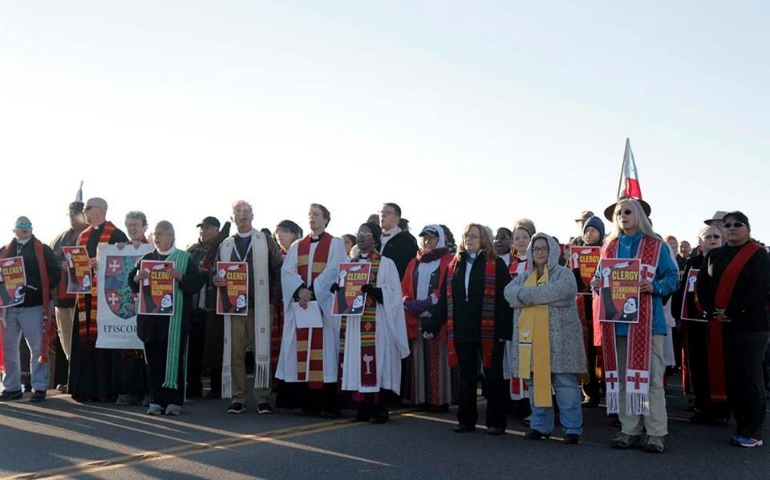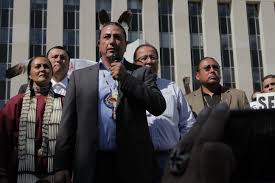Native American Resistance to Dakota Access Pipeline
The Standing Rock Sioux tribe has opposed the Dakota Access Pipeline (DAP or DAPL) since first learning about plans for the pipeline in 2014. But it's only been in the last year that their protest has gained national attention, as thousands of protesters—including Native Americans from dozens of tribes and U.S. veterans —gathered in North Dakota in attempt to block the 1,200-mile project (background).
Resistance to the project has come from several angles: Indian treaty rights, environmental concerns, and desecration of sacred Native sites, as well as the failure by government and business to seek or consider input by those affected sought prior to the decision. Critics say the project could devastate the poorest people in the region; supporters argue there is no better alternative and call the protesters arguments myths. SCJs in South Dakota report that almost all those living on the reservations they serve support the protests, while many if not most whites in the area (including Catholics) strongly oppose the protests. It has been a divisive issue. For months, observers reported on the militarization of the police force mobilized against the protesters, who except for some isolated incidents remained resolutely nonviolent. At times the situation looked volatile. Then in early December, opponents got a major win, as the United States Army Corps of Engineers effectively halted construction of the pipeline at Standing Rock. Most protesters left the camp as the winter weather turned vicious. However, President Trump — who may or may not have investments in both Energy Transfer Partners and Phillips 66, the owner of a quarter of the Dakota Access pipeline — has now reversed that decision with an Executive Order. Tribal Chairman Dave Archambault II last week rebuked activists arrested Wednesday for setting up a camp on private property and repeated the tribe’s call for supporters not to return to the camps. “The fight is no longer here, but in the halls and courts of the federal government,” said Archambault. This page will be updated frequently as things develop. New: Federal judge says environmental review inadequate, handing a last-minute victory to Native tribes Related: Appeals Court Refuses to Stop Oil in Pipeline, Judge Doubts Tribes Have Strong Case on Appeal Pope Speaks Out on Indigenous Rights, Without Explicitly Mentioning DAPL Tribe Files Legal Challenge to Stall Dakota Access Pipeline 176,000 gallon oil spill 150 miles from Standing Rock
|


